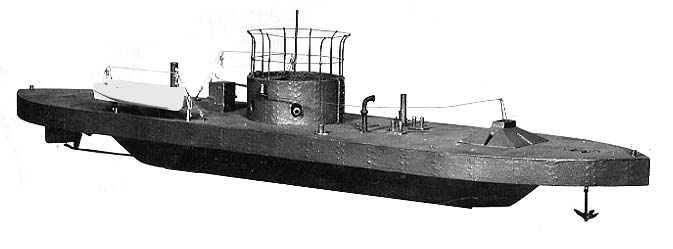|
USS Terror
USS ''Terror'' may refer to the following ships operated by the United States Navy: * ''Terror'', a screw tugboat built in 1861 at St. Louis, Missouri; transferred to the U.S. Navy on 30 September 1862 and renamed * , a monitor originally commissioned as ''Agamenticus'', 5 May 1864; broken up 1874 * , an ; commissioned 15 April 1896 and served in the Spanish–American War and as a training vessel * , a minelayer A minelayer is any warship, submarine or military aircraft deploying explosive mines. Since World War I the term "minelayer" refers specifically to a naval ship used for deploying naval mines. "Mine planting" was the term for installing controll ... commissioned 15 July 1942 and sold for scrap in 1971 {{DEFAULTSORT:Terror United States Navy ship names ... [...More Info...] [...Related Items...] OR: [Wikipedia] [Google] [Baidu] |
United States Navy
The United States Navy (USN) is the maritime service branch of the United States Armed Forces and one of the eight uniformed services of the United States. It is the largest and most powerful navy in the world, with the estimated tonnage of its active battle fleet alone exceeding the next 13 navies combined, including 11 allies or partner nations of the United States as of 2015. It has the highest combined battle fleet tonnage (4,635,628 tonnes as of 2019) and the world's largest aircraft carrier fleet, with eleven in service, two new carriers under construction, and five other carriers planned. With 336,978 personnel on active duty and 101,583 in the Ready Reserve, the United States Navy is the third largest of the United States military service branches in terms of personnel. It has 290 deployable combat vessels and more than 2,623 operational aircraft . The United States Navy traces its origins to the Continental Navy, which was established during the American Revo ... [...More Info...] [...Related Items...] OR: [Wikipedia] [Google] [Baidu] |
Tugboat
A tugboat or tug is a marine vessel that manoeuvres other vessels by pushing or pulling them, with direct contact or a tow line. These boats typically tug ships in circumstances where they cannot or should not move under their own power, such as in crowded harbour or narrow canals, or cannot move at all, such as barges, disabled ships, log rafts, or oil platforms. Some are ocean-going, some are icebreakers or salvage tugs. Early models were powered by steam engines, long ago superseded by diesel engines. Many have deluge gun water jets, which help in firefighting, especially in harbours. Types Seagoing Seagoing tugs (deep-sea tugs or ocean tugboats) fall into four basic categories: #The standard seagoing tug with model bow that tows almost exclusively by way of a wire cable. In some rare cases, such as some USN fleet tugs, a synthetic rope hawser may be used for the tow in the belief that the line can be pulled aboard a disabled ship by the crew owing to its lightness ... [...More Info...] [...Related Items...] OR: [Wikipedia] [Google] [Baidu] |
Monitor (warship)
A monitor is a relatively small warship which is neither fast nor strongly armored but carries disproportionately large guns. They were used by some navies from the 1860s, during the First World War and with limited use in the Second World War. The original monitor was designed in 1861 by John Ericsson, who named it . They were designed for shallow waters and served as coastal ships. The term also encompassed more flexible breastwork monitors, and was sometimes used as a generic term for any turreted ship. In the early 20th century, the term was revived for shallow-draught armoured shore bombardment vessels, particularly those of the Royal Navy: the s carried guns firing heavier shells than any other warship ever has, seeing action (albeit briefly) against German targets during World War I. The ''Lord Clive'' vessels were scrapped in the 1920s. The term "monitor" also encompasses the strongest of riverine warcraft, known as river monitors. During the Vietnam War these much sm ... [...More Info...] [...Related Items...] OR: [Wikipedia] [Google] [Baidu] |
Spanish–American War
, partof = the Philippine Revolution, the decolonization of the Americas, and the Cuban War of Independence , image = Collage infobox for Spanish-American War.jpg , image_size = 300px , caption = (clockwise from top left) , date = April 21 – August 13, 1898() , place = , casus = , result = American victory *Treaty of Paris (1898), Treaty of Paris of 1898 *Founding of the First Philippine Republic and beginning of the Philippine–American War * German–Spanish Treaty (1899), Spain sells to Germany the last colonies in the Pacific in 1899 and end of the Spanish Empire in Spanish colonization of the Americas, America and Asia. , territory = Spain relinquishes sovereignty over Cuba; cedes Puerto Rico, Guam and the Philippine Islands to the United States. $20 million paid to Spain by the United States for infrastructure owned by Spain. , combatant1 = United State ... [...More Info...] [...Related Items...] OR: [Wikipedia] [Google] [Baidu] |
Minelayer
A minelayer is any warship, submarine or military aircraft deploying explosive mines. Since World War I the term "minelayer" refers specifically to a naval ship used for deploying naval mines. "Mine planting" was the term for installing controlled mines at predetermined positions in connection with coastal fortifications or harbor approaches that would be detonated by shore control when a ship was fixed as being within the mine's effective range. Before World War I, mine ships were termed mine planters generally. For example, in an address to the United States Navy ships of Mine Squadron One at Portland, England, Admiral Sims used the term “mine layer” while the introduction speaks of the men assembled from the “mine planters”. During and after that war the term "mine planter" became particularly associated with defensive coastal fortifications. The term "minelayer" was applied to vessels deploying both defensive- and offensive mine barrages and large scale sea mining. " ... [...More Info...] [...Related Items...] OR: [Wikipedia] [Google] [Baidu] |




